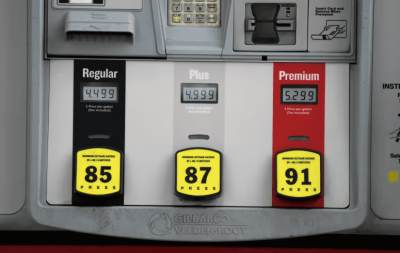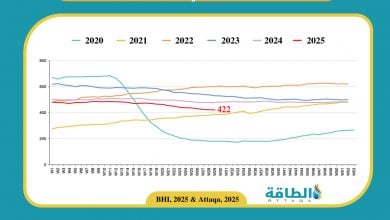The Biden Administration’s policies have pushed gasoline prices higher (Article)
Mark Mathis

Hey Americans, as you curse the spinning numbers on the gasoline or diesel fuel pump, remember, it’s not just about drilling or the Keystone Pipeline, or Vladimir Putin.
Yes, the Biden Administration’s anti-drilling and anti-pipeline policies have significantly pushed prices higher. Putin’s invasion of Ukraine has massively disrupted the global energy market. I do not want to minimize these events.
These factors, along with inflation caused by massive deficit spending by the U.S. government and federal reserve, are the most important drivers of higher fuel costs. However, there are other factors in play, most notably structural problems in refining.
No new refineries
No large “greenfield” refinery has been constructed in the United States since 1977. (A greenfield refinery is a facility constructed on a site with no previous infrastructure.)
Ponder that one a moment—no large new refinery site constructed in the past 45 years! And, no new refineries are planned.
At the same time, refinery sites have been closing at an accelerating pace. In the past six years the number of U.S. refineries has declined by ten present.
Does this sound like a nation that’s interested in providing sufficient quantities of liquid fuels and other petroleum-based products to its citizens?
The only reason the U.S. is not in a full-blown refinery crisis right now (but a crisis is coming quickly) is that “brownfield” refinery expansions have increased capacity as mostly smaller refineries have been shutting down.
Think about that one for a moment. Why would the U.S. allow its refining capacity to be condensed into a smaller number of larger sites?
If one of those giant refineries has a serious problem the impacts will be significantly larger than if we had a wider spread of refineries in many locations. Policy decisions matter.
Crude move.. and lower inventories
There is also the issue of moving crude oil from where it is produced to where it is refined.
Having more refineries operating closer to where oil is taken from the ground would make the entire process more efficient resulting in lower costs for consumers.
And, of course, this efficiency would result in fewer emissions, which is what politicians keep saying they want. It makes you wonder, “What are the people at the Department of Energy actually doing all day?”
As a result of the Covid lockdowns there was an unprecedented drop in global travel.
With travel chocked off, refiners were left with an excess supply of fuel, especially diesel. These conditions led a number of refineries to retool to produce biofuel.
Now that travel has returned—as any rational person expected it would—we don’t have enough refining capacity for diesel.
Putin’s invasion of Ukraine is exacerbating the problem of lower inventories and higher prices. Most nations in Europe have decided they no longer want Russian oil or refined products.
So, Europe is looking to the United States to provide diesel. (Europe’s transportation system is highly diesel intensive while the U.S. market is much more dependent on gasoline.)
The U.S. stockpile of diesel is already at a two-decade low as larger shipments of diesel begin heading to the EU.

Renewable Fuel Standard
There is another problem that you probably haven’t heard about. The U.S. has something called the Renewable Fuel Standard (RFS).
The RFS requires ethanol to be blended into gasoline prior to it being transported to gas stations. When ethanol is blended, a tradeable credit called a “Renewable Identification Number” (RIN) is created.
Refiners must collect the correct number of RINS to demonstrate they are in compliance with the law.
The blending stations are almost completely owned by major oil companies, which creates a giant problem for smaller, independent refiners who must purchase RINs in the open market.
Currently ethanol makers produce more product than can be absorbed in the system, which is what’s pushing up the cost of RINs. The price of RINs has increased by 1,200 percent since January of 2021. It’s a ridiculous system that has driven up the cost of gasoline by an estimated $.30 a gallon.
The RFS system is so expensive to independent refiners that it’s driving them out of business.
The Biden Administration could provide relief to these refiners AND lower the cost of gasoline by $.30 almost immediately if only it focused quick attention on fixing the RFS.
Upset of gasoline prices
U.S. consumers are understandably upset about the cost of a gallon of gasoline. Unfortunately, it’s a virtual certainty that the problem is going to get worse in the coming weeks.
If the various pressures on refining are not at least partially relieved soon, there could be shortages of gasoline and there will probably be shortages of diesel.
An undersupply of diesel fuel—the fuel that moves all big transportation from ships to trains to tractor trailers—will bring a level of economic pain people in the U.S. haven’t felt since the 1970s.
Buckle up. It’s going to be a rough summer.
*Mark Mathis, Speaker, documentary filmmaker, video producer, and author in energy.
READ MORE..
- Shale Blessings Squandered by Bad Policy (Article)
- Energy Eggs Need Many Baskets (Article)
- Growing risks to Russian energy supply to Europe keep crude on the boil (Article)







